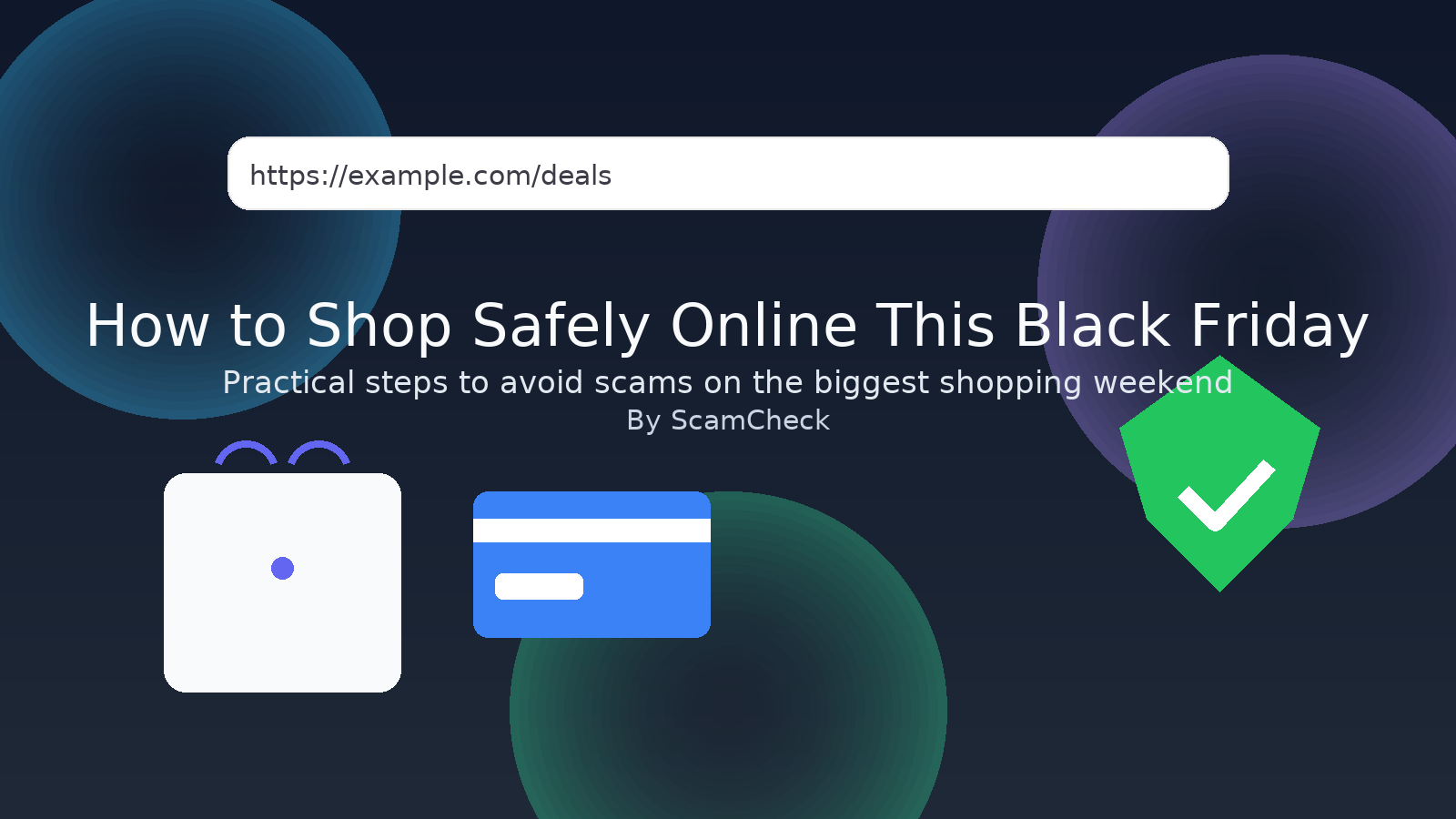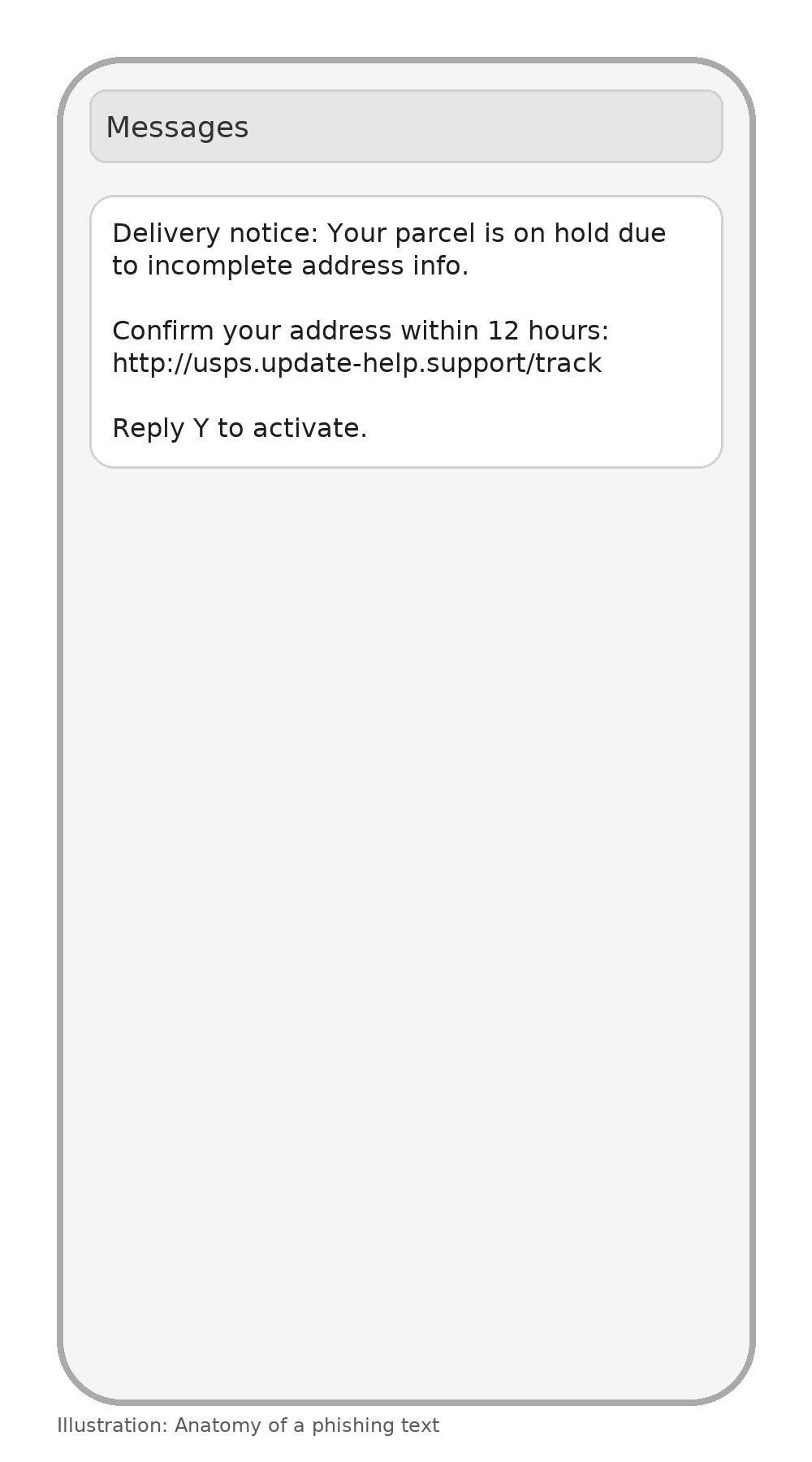
Black Friday brings the biggest online deals of the year, along with a spike in scams. U.S. shoppers spent record amounts last season, and scammers took notice. Adobe reported U.S. holiday e-commerce of roughly $241.4B in 2024’s Nov–Dec window, and projected continued growth into 2025, which means more targets for fraudsters.
Meanwhile, the FTC confirmed Americans reported over $10B lost to fraud in 2023, the highest on record.
This guide explains the biggest Black Friday online threats, shows real examples, and gives practical steps to protect yourself. It focuses on the United States and includes a global example for perspective.
The biggest online threats to watch
1) Fake stores and cloned sites
Criminals spin up realistic “deal” sites that copy well known brands. In 2024, CBS News highlighted scams imitating retailers like IKEA, Wayfair, and The North Face, complete with look alike domains and “trusted store” badges. The pages feel authentic, but checkout harvests card and login data.
How to spot and avoid it
- Inspect the URL carefully. Look for misspellings, extra words, or odd domain endings.
- Prefer typing a retailer’s name into your browser or search engine rather than clicking an ad.
- Check reviews for the site name plus “scam” or “complaint.”
- Pay with a credit card so you have chargeback rights if an order never arrives. The FBI advises using credit cards and getting shipment tracking.
2) Phishing texts and emails about deliveries or orders

Smishing and phishing surge during holiday shopping because people expect shipping updates. The U.S. Postal Inspection Service warns that USPS does not text you with links unless you initiated tracking, and you should treat unsolicited “package” links as suspicious. Local U.S. media and consumer alerts echoed the same warning in late 2024.
How to spot and avoid it
- Do not click links in unexpected “order” or “delivery” messages. Go to the retailer or carrier site directly, or use their official app.
- Check the sender domain closely. Grammar mistakes or odd addresses are red flags.
- If in doubt, call customer support using the number on the official website.
Quick check: Paste a suspicious link or message into ScamCheck to get an instant risk readout before you click. Use it as a second opinion, especially on mobile where links are harder to inspect.
3) Social ads and marketplace “too good to be true” deals
Scammers weaponize social ads and cloned brand pages. CBS noted fake brand promotions that redirected shoppers to phony checkouts during Black Friday 2024.
How to spot and avoid it
- Be cautious with new seller accounts that lack history or reviews.
- When a deal appears in an ad, navigate to the retailer’s official site yourself.
- Use marketplace protections and in app checkout when available.
4) Payment traps and non delivery scams
Gift cards, wire transfers, and instant bank payments are high risk because they are difficult to reverse. The FBI holiday guidance recommends credit cards, tracking numbers, and prompt reporting if something looks wrong.
How to spot and avoid it
- Refuse demands for payment by gift card or wire.
- Save order confirmations and screenshots so you can challenge a charge if needed.
- Monitor statements during the season and dispute unauthorized charges quickly.

A global snapshot
Black Friday scam activity is not only a U.S. problem. Euronews and U.K. authorities warned that fake parcel texts and purchase scams rose sharply across Europe during the 2023–2024 seasons, with significant per victim losses reported.
What this means for you
The tactics are the same everywhere: cloned sites, fake delivery messages, and social ads. The defenses you use in the U.S. also work when you are shopping from international sellers.
What actually works: comparing safety approaches
Below is a practical comparison of popular ways to protect yourself. Choose the mix that fits your habits.
A) Browser and device protections
What it is: Built in browser warnings, OS updates, and reputable antivirus.
- Pros: Always on, no extra steps after setup, blocks many known bad sites, closes software holes.
- Cons: Cannot catch every new scam domain, warnings can be overlooked during rush.
When to use: All the time. Keep auto update on and do not ignore security prompts.
B) Manual verification habits
What it is: Typing retailer URLs yourself, checking order status in the official app, and looking up seller reviews.
- Pros: Free, reduces the biggest phishing risk, improves over time as you get used to it.
- Cons: Takes a few extra seconds, requires attention to detail.
When to use: Any time you get a link by text or email. It is your best defense against smishing.
C) Payment choices
What it is: Prefer credit cards over debit, avoid gift cards and bank transfers to unknown sellers.
- Pros: Strong dispute rights and fraud limits with credit cards. The FBI highlights credit as the safer online payment.
- Cons: You still need to monitor statements and report quickly.
When to use: Every online checkout. If the seller refuses credit cards, walk away.
D) Deal validation tools
What it is: URL and message scanners that flag risky domains or phishing signals.
- Pros: Fast second opinion before you click, useful on mobile.
- Cons: Tools vary. Not all catch every brand new scam.
When to use: Any time a deal or message feels off.
Try ScamCheck to screen suspicious links, emails, or screenshots before you buy.
Your 60 second Black Friday safety checklist
- Search, do not click. Type retailer names into your browser or use the official app.
- Inspect the URL. Look for spelling errors or extra words. Avoid unfamiliar domains.
- Watch delivery texts. USPS says unsolicited texts with links are a red flag unless you requested tracking.
- Pay smart. Use a credit card, save confirmations, and insist on tracking numbers.
- Slow down on social ads. Navigate to the brand site yourself rather than buying through a random ad.
- Check the deal with a tool. Run the link through a scanner like ScamCheck before you commit.
- Keep software updated. Updates block known attacks automatically.
- Act fast if scammed. Contact your bank and report to authorities right away. The FBI directs victims to ic3.gov.
Why this matters this year
Holiday e-commerce keeps growing, which means more targets for criminals. Adobe’s data shows continued record online spending, and that growth attracts more fake stores, more smishing, and more social ad fraud. Staying safe is not about fear. It is about a few simple habits that make scams unprofitable.
Final word
Black Friday can be safe and enjoyable with the right habits. Verify links, favor credit cards, and use tools like ScamCheck as your quick “is this safe” step. A few seconds of checking can save you money, time, and stress.
Sources and further reading
- Federal Trade Commission: Americans reported $10B+ lost to fraud in 2023. Guidance on avoiding holiday shopping fraud.
- Federal Bureau of Investigation: Holiday shopping scam tips, including using credit cards and obtaining tracking numbers, plus how to report to IC3.
- Adobe Analytics: U.S. holiday e-commerce forecasts and season recap, confirming record online spending.
- CBS News: Black Friday phishing and fake brand sites targeting U.S. shoppers.
- USPS / United States Postal Inspection Service: Holiday smishing warnings and safe delivery guidance.
- Euronews / U.K. NCSC: European warnings about purchase scams and fake parcel texts during Black Friday.